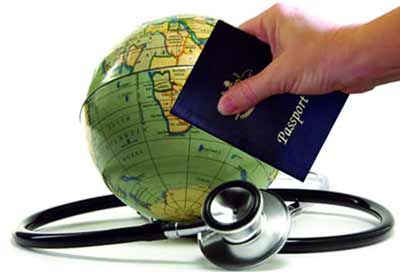

Medical Tourism in Nepal: Oodles of potential

SHREETI DHAKAL
It’s no secret today that with science beating the scourges of diseases, especially epidemics, human development indexes have been improving and the longevity of people increasing across the world, slowly but steadily.
This success story has encouraged one particular industry to set its firm footing in the world of commerce, not imagined in this form and shape and size ever before. Although unrecorded history of medical tourism dates back to the times when people used to visit Egypt for medical reasons, it was never nationally prioritized until lately.
According to Medical Tourism Association’s latest report, there are 50 countries that have identified medical tourism as a national industry. Unfortunately, Nepal is not one of them, while more than a dozen Asian nations, including our immediate neighbors India and China, have hit the list. A South Korean newspaper disclosed last week that the lawmakers were working on a war footing to announce Seoul, the capital city, as a “Special Medical Tourism Zone” by 2017.
We occasionally read in the media about the prospects of medical tourism in Nepal. The issue appears only occasionally in the media, and disappears before it can become a national debate.
Although the West is still home to health related research, ultra-modern technologies, and standards of care, the East has for some time been the Mecca for healthcare and health services. With this shift of services and care to Asia from the West, nations like China, India, Japan, Singapore, Thailand and Taiwan are emerging as successful medical tourism destinations where affluent and middle class medical tourists from countries like the USA and the UK and the rest of Europe and Canada are flooding. They bypass medical care in their countries because their healthcare systems are muddied with politics and corporate greed. Plus, in the East they can avoid long waiting list to be seen by a doctor.
We do not need to Google it to know how the West regards the lifestyle and eating habits of the East. Educated Westerners now shop at Whole Foods for organic produces and do Yoga, the idea of which generated in the East centuries ago.
If one closely monitors how the Nepali diaspora (especially ones in the US, Canada and Europe) spend their limited time in Nepal, one will find them either visiting friends and relatives, or visiting doctors for health checkups. It is not that they do not have health insurance in the country they live in. It is because they are far more comfortable with the results here than in the West. Additionally, health checkups are much cheaper here and they do not have to wait for a long period as in the countries of their current residence.
I recall taking one of my distant cousins to a dentist while she was on a visit to Nepal last October. She had also visited an ophthalmologist, a gynecologist, and a neurologist, apart from visiting Vayodha hospital for general checkup. She told me that although she did not question the treatment methods of the West, she felt at home and comfortable with the hospitals and doctors of Nepal. She was also glad that she did not have to wait for months to be seen by a doctor.
She also said that doctors in the West were too quick to prescribe antibiotics. “Ordering x-rays and MRIs are almost routine for minor injuries or symptoms. They do not want to take the risk by not prescribing antibiotics or not ordering x-rays and MRIs, for fear of being sued in case something goes wrong with the patients,” she explained.
India draws a significant number of medical tourists. We can certainly attract some of them here if we have state-of-the-art health facilities that provide standard healthcare. We have no shortage of doctors who are experienced and qualified and have been educated in the West. We should be proud that our doctors routinely visit Singapore and Thailand to perform surgeries as visiting surgeons. Furthermore, our country is very suitable for medical tourism due to its favorable climate throughout the year, which is rare in most places across the world.
Fortunately, making it happen is not very challenging. It is easier than we imagine. The government’s commitment to promote medical tourism and to providing guarantee of investment to international investors are key parameters. If the right environment can be created, there are many corporate and middle class investors, including NRNs, who would jump into the field. They can create a number of medical facilities of international repute, of which we have few so far.
However, as is said often, it’s easier said than done. Our political and social leadership needs to trust our own doctors and hospitals that are serving our community so diligently. Furthermore, we as a democratic republic have not yet finalized our constitution, we have not yet settled our internal disputes of ethnic identity and federalism, we have not yet disciplined our own irresponsible behaviors on the streets, we have not made our cities and suburbs labor and environment friendly, and we do not have a transparent tax system. Our transportation and sewage systems are still not friendly to the transportation, contributing to traffic jams and pollution. All these issues need to be addressed before foreign clientele begins feeling comfortable in Nepali medical institutions.
Unless we settle these issues, clean the dirty dust of our politics, and unless our governments are stable and bureaucracy transparent, foreign investors will continue to feel insecure in investing in a nascent democracy.
source: Dhakal, Shreeti (2013),"Oodles of potential",republica,27 August 2013








